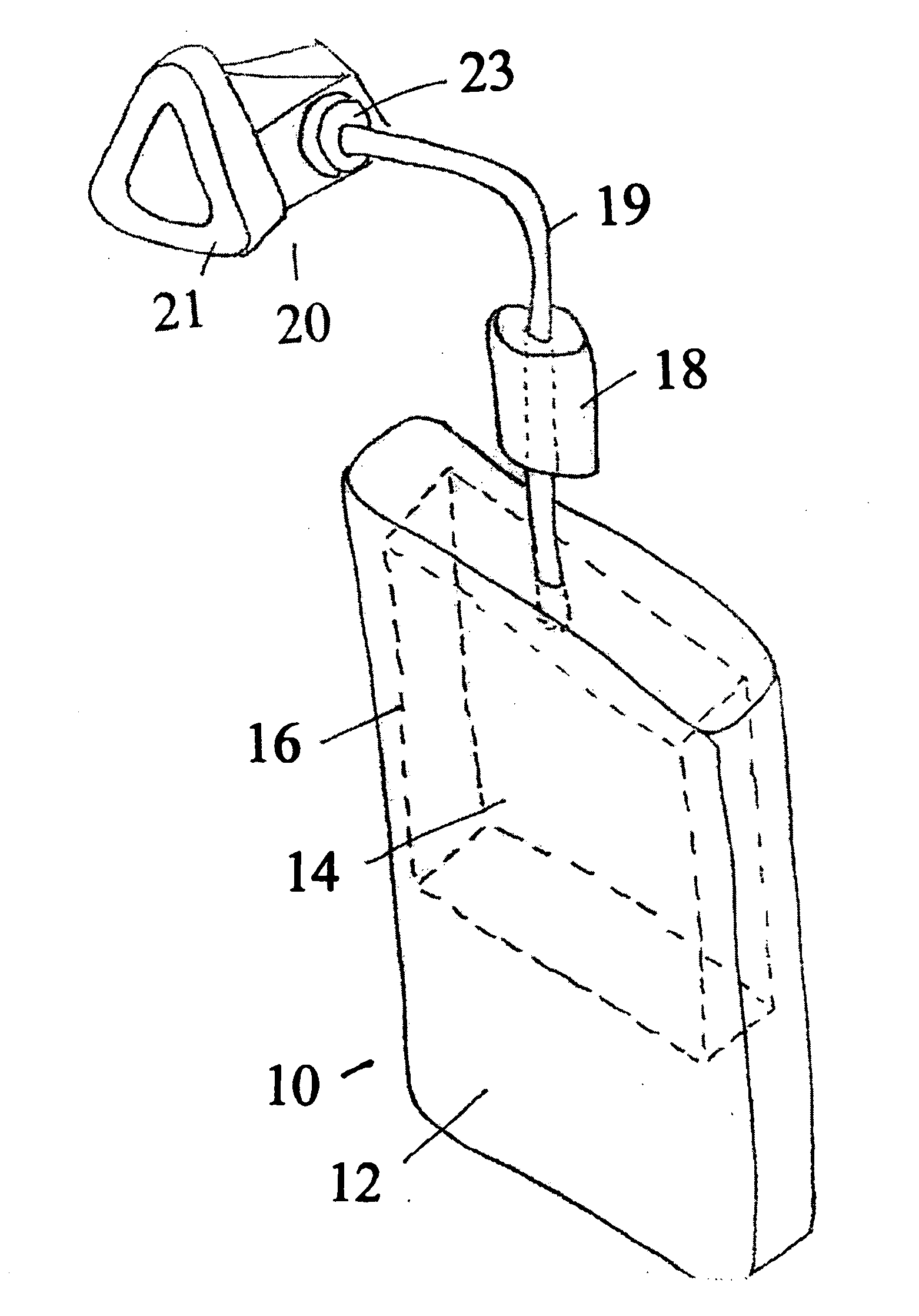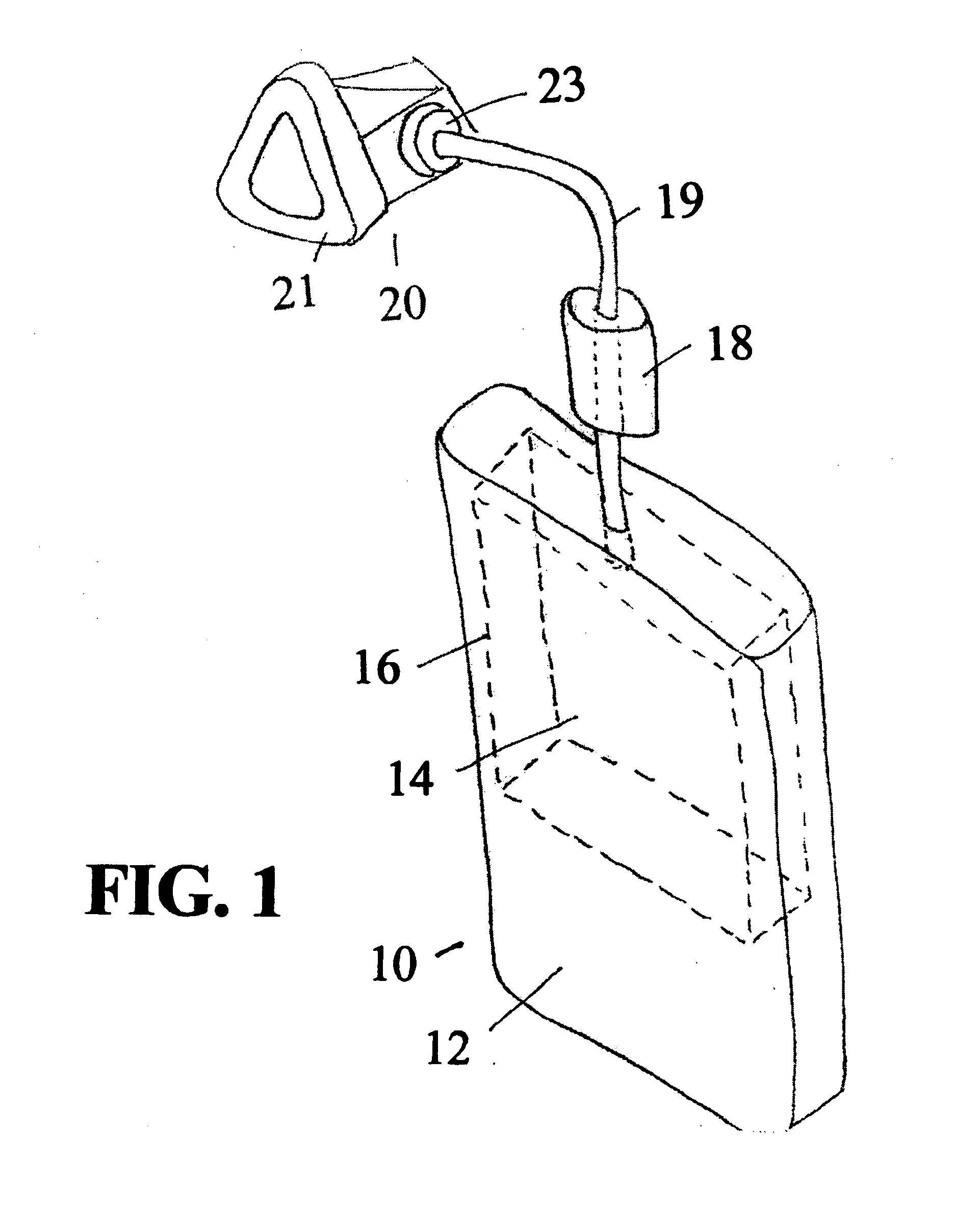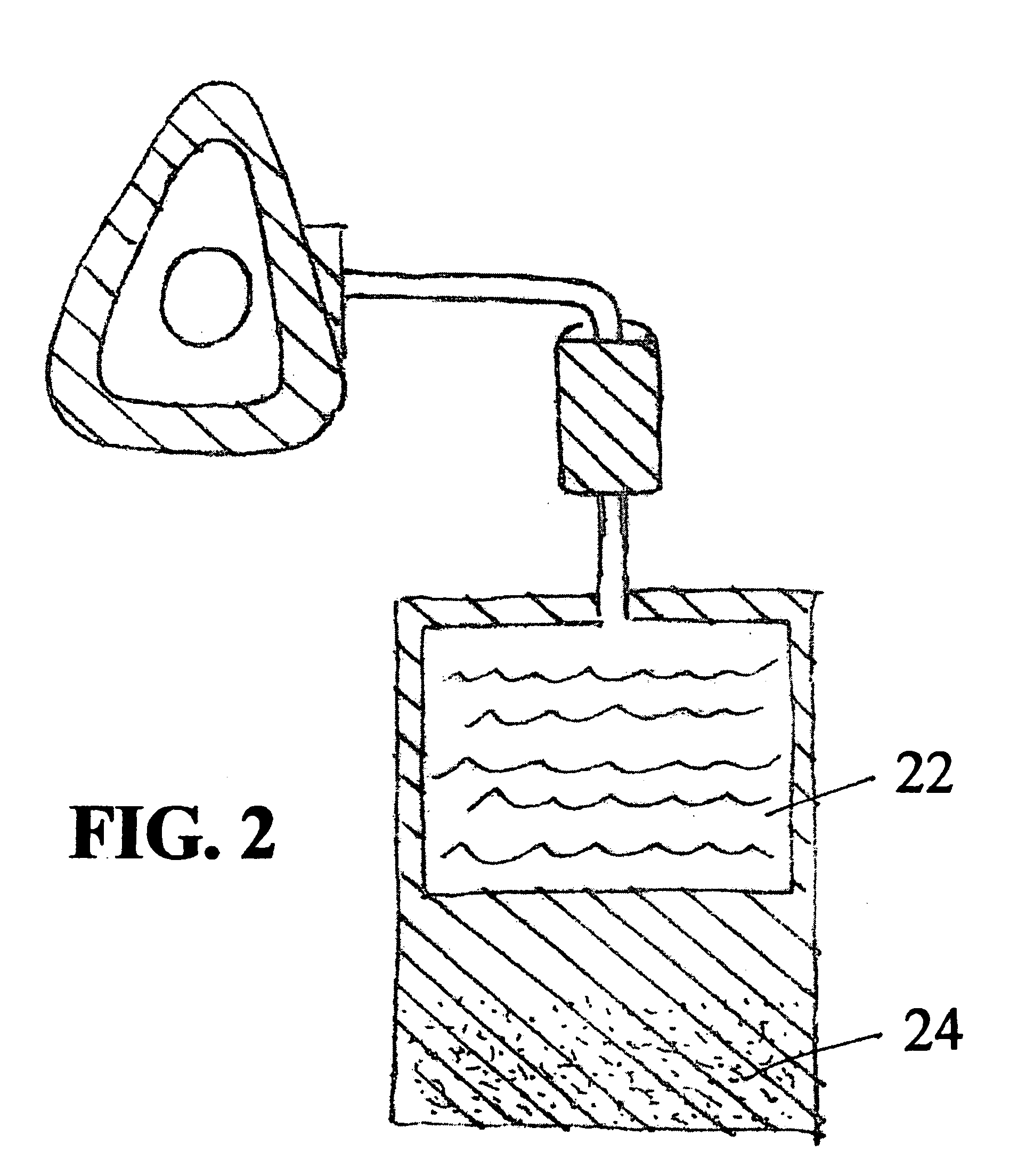Apparatus and Methods of Providing Diatomic Oxygen (O2) Using Ferrate(VI)-Containing Compositions
a technology of diatomic oxygen and ferrate, which is applied in the direction of detergent compounding agents, halogen oxide/oxyacids, other chemical processes, etc., can solve the problems of poor thermal stability, short shelf life of peroxides, poor thermal stability, etc., and achieve the effect of avoiding the drying of the throa
- Summary
- Abstract
- Description
- Claims
- Application Information
AI Technical Summary
Benefits of technology
Problems solved by technology
Method used
Image
Examples
example 1
Preliminary Evaluation of Acids
[0175]Preliminary tests were carried out using each of 3 types of acids: mineral acids, carboxylic acids, and polymeric acids. A 100% molar excess of each acid was added to a measured amount of potassium ferrate in a vial. The reaction was observed for qualitative results only and the pH values were measured.
[0176]For the mineral acid, phosphoric acid was used. The reaction was very fast and produced viscous purple / pink slurry with black particles. Vigorous bubbling was seen.
[0177]Two carboxylic acids were tested. Acetic acid reacted very quickly with the potassium ferrate and produced a dark red / brown liquid with pH of around 4. The acetic acid odor were very prominent.
[0178]A less volatile carboxylic acid, citric acid, was tested. The rate of reaction was slower than that of acetic and phosphoric acids and produced an orange liquid with a pH of about 3. In both cases, vigorous bubbling was noticed.
[0179]The reaction of poly(acrylic acid) with potassi...
example 2
Phosphoric Acid / Potassium Ferrate Evaluation: Blank Run
[0180]For the following quantitative tests, an excess of the acid was used so that the limiting factor in the reaction was the amount of ferrate(VI) present rather than the amount of acid. Initially, a 100% excess was used, but in further tests was reduced to 10% to determine if the same results could be obtained from a smaller amount of acid.
[0181]The test procedure was performed in the absence of the potassium ferrate in order to determine if the gas generated was a product of the acid itself. In this experiment, no gas was generated, proving that the actual acid / ferrate reaction was the source of the gas and oxygen.
example 3
Phosphoric Acid / Potassium Ferrate(VI) Evaluation: 100% Excess H3PO4
[0182]Three trials of the reaction using phosphoric acid in 100% excess were performed. Results of trial one deviated greatly from the next two. It is believed that a small leak may have been created in the system during Trial 1 causing an unusually high pressure increase so its results were not considered in the conclusion. Trials 2 and 3 were much more alike and resulted in an average of 0.786 moles of gas generated per mole of potassium ferrate. This value is close to the theoretical yield of 0.750 moles of oxygen per mole of potassium ferrate. In each case, a significant increase in output of the oxygen-selective Clark Cell proved that the gas created was, in fact, oxygen. Results are shown in Table 1.
TABLE 1Results of Reaction of 100% Excess H3PO4 with Potassium Ferrate(VI)Vol. of AcidAmt. of GasOxygenVol. ofMass ofAmount ofper Gram ofReactionReactionPressureAmt. of GasGenerated perDetectedAcidK2FeO4K2FeO4K2FeO...
PUM
 Login to View More
Login to View More Abstract
Description
Claims
Application Information
 Login to View More
Login to View More - R&D
- Intellectual Property
- Life Sciences
- Materials
- Tech Scout
- Unparalleled Data Quality
- Higher Quality Content
- 60% Fewer Hallucinations
Browse by: Latest US Patents, China's latest patents, Technical Efficacy Thesaurus, Application Domain, Technology Topic, Popular Technical Reports.
© 2025 PatSnap. All rights reserved.Legal|Privacy policy|Modern Slavery Act Transparency Statement|Sitemap|About US| Contact US: help@patsnap.com



